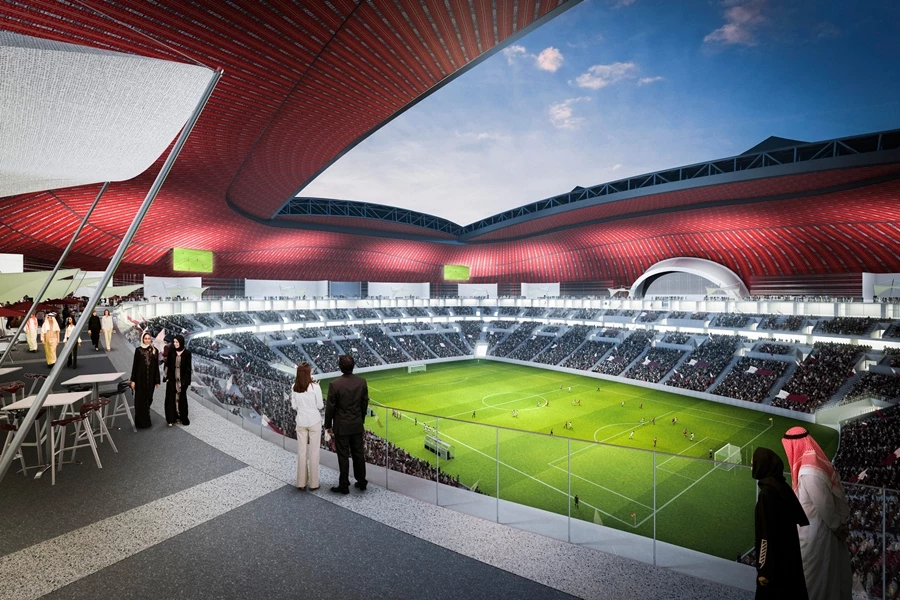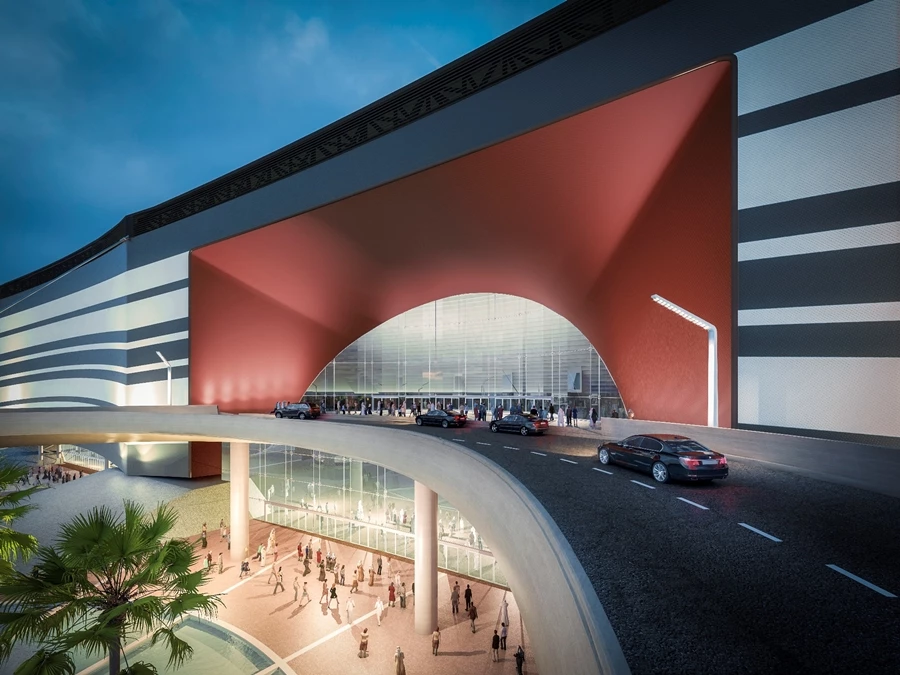Modeled on a traditional nomadic tent and featuring a removable top tier, the Al Bayt Stadium is the second of 12 new venues Qatar plans to build for the 2022 World Cup.
While some of the ambitious ideas floated prior to the success of Qatar's controversial bid to host FIFA's flagship event in 2022 – like the solar powered Lusail Iconic Stadium and the use man-made clouds to provide shade – seem to have, err, evaporated, one thing that you can bet on is the stadiums that are built will be well worth a look.
The 40,000 capacity Al Wakrah stadium, just south of Doha, has already been unveiled with a pearl-inspired design, temperature-cooled climate and targeted Global Sustainability Assessment System (GSAS) 4 Star and Leadership in Energy & Environmental Design (LEED) certifications.
The GSAS was launched by the Gulf Organization for Research and Development (GORD) in 2012 and is aimed at being the the standard for excellence on sustainability in the Middle East and North Africa region. It takes into account eight different areas, including energy, water and materials.
LEED certification was developed in the US, but has become a widely recognized mark of excellence. It recognizes best-in-class building strategies and practices in the construction of green buildings.
Like the Al Wakrah stadium, the Al Bayt Stadium is targeting both LEED and GSAS certification. The stadium and its surrounding precinct are planned to be built using best practice energy-efficiency measures and green materials. Renewable energy, meanwhile, will also be generated by the stadium and precinct.
The stadium will seat 60,000 spectators and will be equipped to FIFA-stipulated levels for hosting matches through to the semi-final round of the World Cup. The stadium's design draws inspiration from the Bayt Al Sha’ar, a tent used by nomadic people in Qatar and surrounding areas. The black and white striped exterior of the stadium is said to mimic that of the Bayt Al Sha’ar, as will the red-patterned interior, and spaces for eating, drinking and relaxing will reflect the principle of hospitality associated with the Bayt Al Sha’ar.
In addition, the upper tier of the Al Bayt Stadium will be removable. Following the conclusion of the 2022 World Cup, the stadium's capacity will be reduced to 32,000 and the removed seats will be "reconfigured and donated" for use in other countries.
The video below shows an animated impression of the stadium.
Source: Qatar Supreme Committee for Delivery & Legacy




















